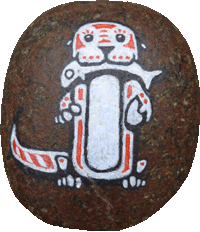19th June 2011
Dinner at 10:30, bed by 12:30 and then up in the morning at 5:30 can’t be healthy. But our tour bus was picking us up at 7:15 and we still had to pack; the notes from the company said that we needed to only take small bags for the two day trip.
The two day tour is billed as a trip to the Colca Canyon, renowned for the Andean Condor, but when our guide trotted out the itinerary for us it turned out that we would actually be spending about two hours at the canyon. This was starting to sound like our city tour around Cusco, and there were some mutterings from our fellow tourists.
To be fair, we had a lot of distance to cover. First we had to get about 200km north from the city of Arequipa to the small town of Chivay, which involved climbing up to 4900m over a high Andean plateau before winding down into the Colca Valley at 3500m.
On day two we would still have to drive for two hours down the valley from Chivay until it turns into the Colca Canyon, almost a kilometer deep where we would be stopping to watch for condors from the canyon rim.But I’d have to count it a good day, because we saw two nifty mammals beginning with ‘V’. The Vicuna are wild cousins of the llama, apparently with the finest fur in the animal kingdom so it’s a wonder they survived at all; the species is now recovering in a number of reserves in Peru and Chile especially. The other critter was the less well known Viscacha, which is best described as a big rabbit with a curly tail and a perpetually sleepy expression. Both these animals live in stupendously high, dry, barren landscapes which scarcely look like they would support life.
After lunch we walked to a fine viewpoint, and on the way back I saw an example of how local cultural tourism can work positively. On the outskirts of the village there was a young girl waiting for us in national costume, and I was grimly expecting a spot of light begging and maybe a “photo = money” routine. But no, when we got there she produced a school exercise book which our guide Alfonso examined and duly signed. Then she explained to us about some of the local crops (translated by our guide) and recited a traditional poem. Our tips would be a good source of extra income for her family, but Alfonso explained that last time he came she didn’t bring her school book and so he refused to let his tour group stop – no proof of doing homework, no money from tourists. Neat.
Oh yes, and we also saw a pair of Andean Condors wheeling overhead! They are huge and splendid birds, but as we huddle in our chilly Chivay hotel room this evening I wonder if we’ve climaxed too soon and our premature condors are going to make the Colca Canyon tomorrow a bit of a let-down.
Related Images:














































OK, so DID you tip the young lady for doing her homework?
We certainly did! Well, in fact we tipped her for explaining about local crops in a charming manner. But she had definitely done her homework as well. It’s a really good idea and I hope it spreads elsewhere in the world.